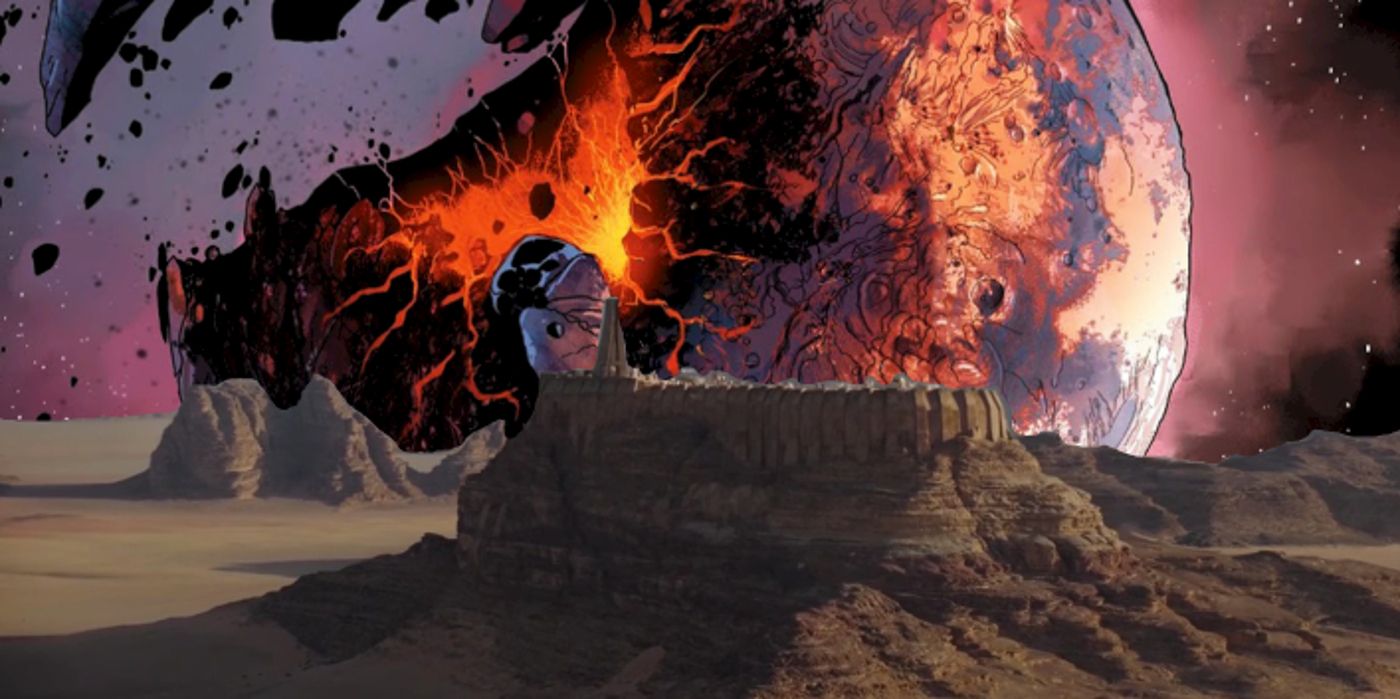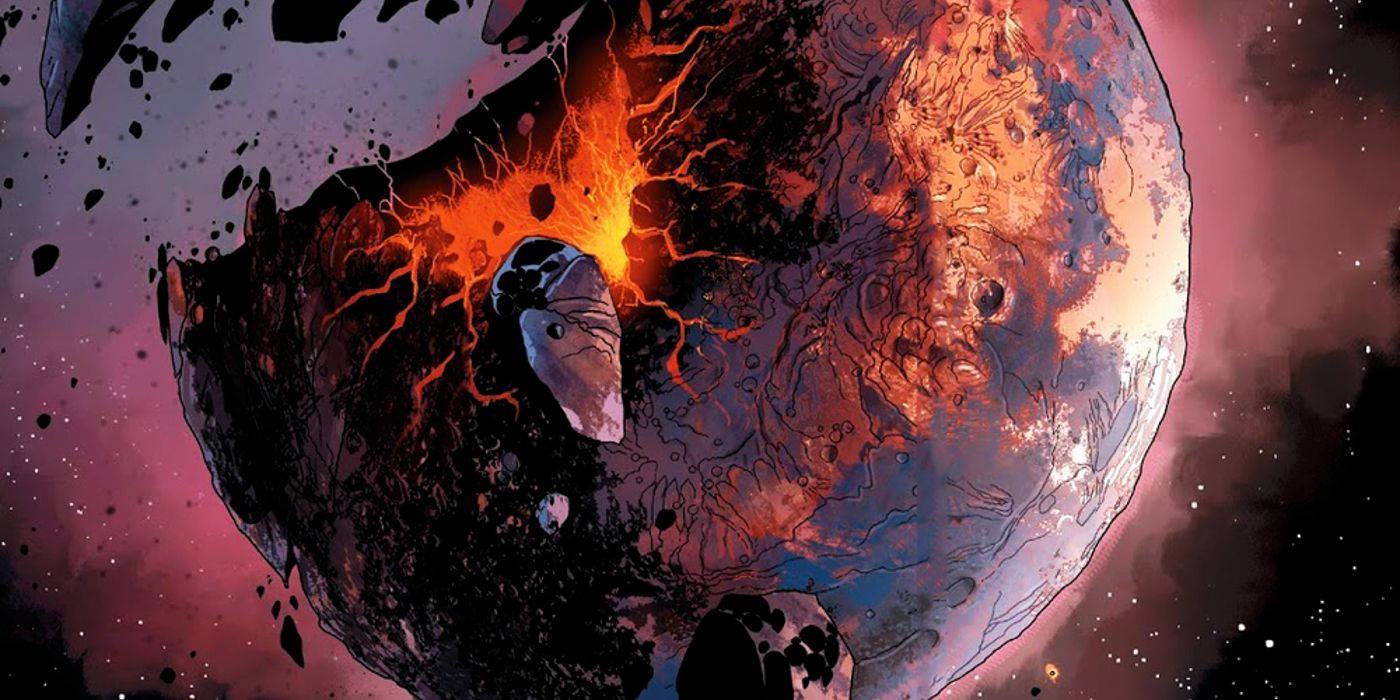
The ancient temple moon of Jedha was devastated by a shot from the Death Star in Rogue One: A Star Wars Story, and tie-in comics revealed the scale of the destruction. Every Star Wars movie or TV series features new worlds and alien races; Rogue One: A Star Wars Story was no exception, introducing the temple moon of Jedha. A vergence in the Force, Jedha was considered a holy site for countless Force traditions, with pilgrims traveling from across the galaxy to visit it. Although many of these traditions were oppressed by the Empire, they still flourished on Jedha.
Unfortunately, the holy temple moon, formerly a haven of peace and a sanctuary for those who wished to meditate, became a place of conflict. The Empire sought to extract Jedha's rich reserves of kyber, using them to power the Death Star's superlaser; Saw Gerrera and his Partisans became aware of Imperial activities on Jedha and led a brutal resistance on the temple moon. In the end, as seen in Rogue One: A Star Wars Story, Saw managed to acquire evidence of the Death Star, and thus, the entire moon became a target, with Grand Moff Tarkin using Jedha to test the Death Star.
The fate of Jedha was revealed in Kieron Gillen and Salvador Larroca's Star Wars run, which saw leading figures in the Rebel Alliance - notably Luke Skywalker, Leia Organa, and Han Solo - head to Jedha in the hopes of reaching an agreement with the surviving Partisans. The Death Star's shot had shattered the moon, rupturing the mantle, venting poisonous vapors into the atmosphere. The remaining Partisans settled on the hostile planet NaJedha, but it was clear even that was dying, its surface ravaged by meteorite fragments from Jedha, known by the locals as "Jedha's Tears," that rained upon it. For their part, the Empire continued to attempt to mine kyber crystals from Jedha, no doubt to use them on the second Death Star. Matters were complicated by pilgrims who still traveled to Jedha even now, although the Empire ultimately banned them.

Ironically, the continuing Imperial interest in Jedha meant the temple moon continued to have galactic significance. The Rebel Alliance had never imagined the Empire could create a weapon as formidable as the Death Star, and they understandably feared the Empire's plans for the kyber they were continuing to mine from the disintegrating moon. Ironically, the aftermath of the Death Star's destruction accomplished what diplomacy had never managed to, with the Rebel Alliance and the Partisans striking an agreement. The Rebels could not condone the brutal actions of Saw Gerrera's Partisans, but they did agree to supply them with everything they needed to continue resisting the Empire from NaJedha for as long as they could.
The galaxy would remember Jedha, just as it remembered Alderaan, as a demonstration of the Empire's brutality and vindictiveness and the Emperor's lust for power. According to Lucasfilm's Secrets of the Sith, Palpatine himself looked approvingly upon Tarkin's actions at Jedha and saw the temple moon as symbolic of the destruction he would rain upon the galaxy when he returned in the Star Wars sequel trilogy. "Now," the Emperor wrote, "any who dare to challenge my rightful place in this galaxy will learn the same painful lesson as the scum on Jedha, Alderaan, and Hosnian Prime. None shall stand in the way of my return."
from ScreenRant - Feed https://ift.tt/3CdCp4Y



0 Comments